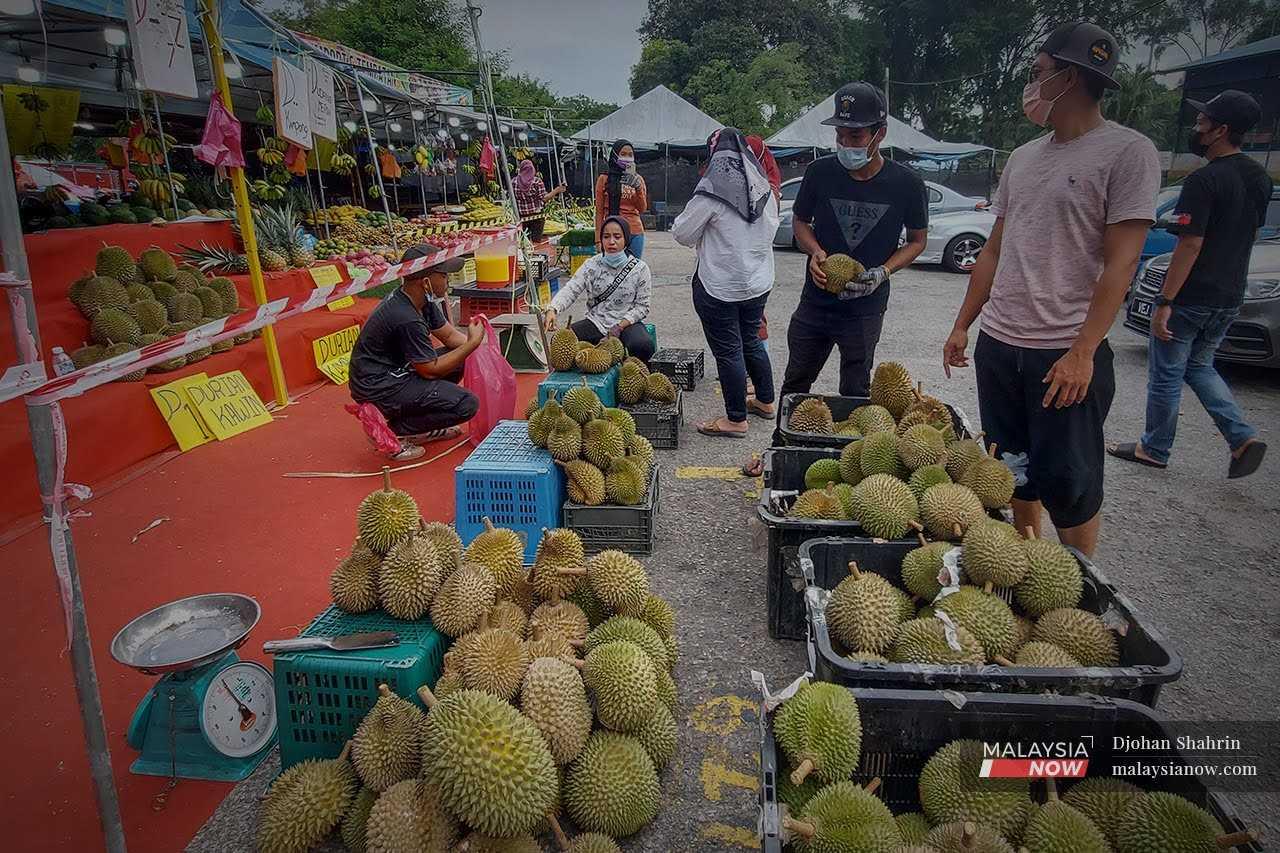Whither Malaysia's durian exports to China after regional trade pact?
While China is a major importer of the king of fruits, it is also launching efforts to cultivate its own durian crops.
Just In
While Malaysia's participation in the Regional Comprehensive Economic Partnership (RCEP) agreement is expected to boost economic performance through its facilitation of trade deals with member countries of the world's largest trading bloc, questions have been raised over the possible effect on local industries as they scramble to achieve new levels of exports.
Through the RCEP, in which the Asia Pacific region is seen as the central hub of new global trade, Malaysia is expected to benefit from such exports with the international trade and industry ministry projecting in March an increase of US$200 million.
The ministry had also expressed optimism that bilateral trade between Malaysia and China would reach a new high.
Deputy International and Trade Industry Minister Lim Ban Hong cited statistics showing that Malaysia-China trade reached US$131.21 billion for the first eight months of 2022 – a 21.1% increase from the same period a year ago.
Nevertheless, concerns have been raised over the effect of the agreement on local industries, which might rush to invest in increasing their operational capacity in order to boost their profits.
For example, China – the largest importer of durians – could take advantage of the RCEP to import more of the fruit from Southeast Asia at a lower cost.
Previous statistics from the China customs showed that year-on-year imports of fresh durians increased 42.7% to 821,600 tonnes while import value increased 82.4% to US$4.205 billion.
This marked a fourfold increase from 2017, with the figures expected to continue rising especially with the implementation of the RCEP.
For local durian entrepreneurs, this might appear to be a golden opportunity to reap higher returns by meeting the growing demand in China.
But China itself is reportedly cultivating its own durian crops, for instance in the provinces of Yunnan, Guangxi and Hainan.
Success in these efforts would raise the question of whether China continues to import durians from Asean, and what will happen to the excess supply by local entrepreneurs.
Wong Kah Meng, senior international sales manager for Hernan Corporation Sdn Bhd, said the situation was not yet a cause for concern for durian producers in the country.
Speaking to MalaysiaNow, he said it was too soon to make any conclusions as China's efforts to produce its own durians were still in the early stages and would need time to show results.
While China was a four-season country, he said, it was still possible for the production of durian crops there as several regions in the southern part had tropical weather conditions.
"Planting and caring for durian trees is not easy," he said, adding that it requires certain skills.
"Weather is the most important element, and it will take about seven years before the results can be seen."
If China succeeds in producing its own durian crops through genetic modifications, he said, Thailand would likely be more affected as the Southeast Asian country exports about 20 times more durians to China than Malaysia does.
Wong also said that Malaysia had the edge in terms of branding since the Musang King durians, which are highly popular in China, can only be produced in the country.
"In China, they are familiar with the taste of Musang King and they prefer to buy the whole fruit," he said.
"It has sentimental value over there."
He said China accounts for 60% of his company's durian exports, adding that last year, durian exports to China which take about three weeks to arrive were worth RM50 million.
"China is our biggest customer," he said.
Economist Yeah Kim Leng meanwhile said that an end to China's durian craze would not necessarily affect Malaysia's economy as the RCEP offers greater opportunities for the export of other products to member countries of the trade bloc.
The RCEP involves 15 countries, 10 of which are from Southeast Asia. The other five are China, Japan, South Korea, Australia and New Zealand.
Yeah said the RCEP was seen as a win-win situation for every country that had joined the free trade agreement.
"We need to look at the bigger picture when it comes to the RCEP," he said.
"It's not limited to just one industry or product. The absence of about 90% of tariffs among RCEP member countries is the main attraction, and this makes it easier for local industries to venture into the international market at a lower cost."
Subscribe to our newsletter
To be updated with all the latest news and analyses daily.
Related Articles
Most Read
No articles found.
